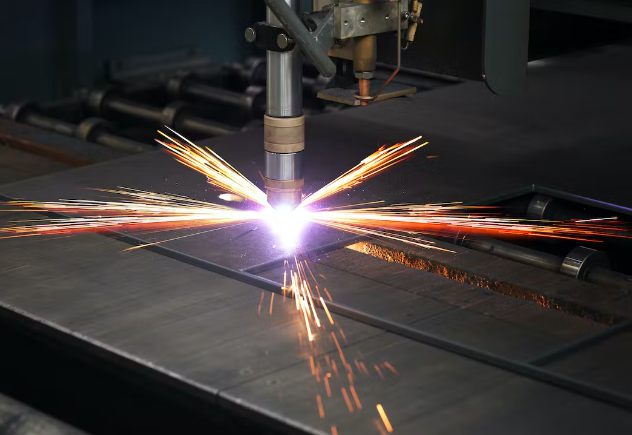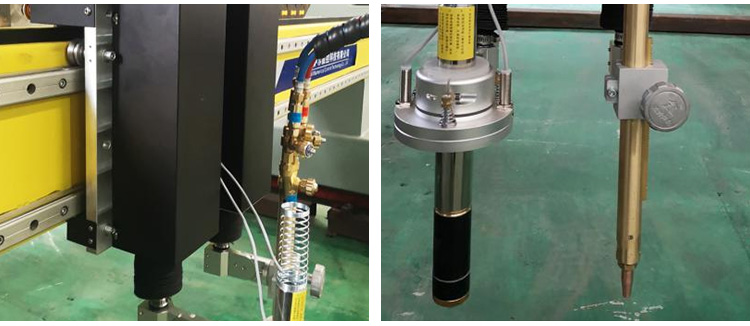Laser Knowledge
The Difference Between Flame and Plasma Laser Cutting Machine?
Cutting metal is a crucial process in many manufacturing industries. There are a few common methods used for cutting sheet metal including flame cutting, plasma cutting, and laser cutting. Each technology has its strengths and weaknesses depending on the type of material, thickness, accuracy and surface finish required. This article will outline the key differences between flame cutting and plasma cutting machines.

What is Flame Cutting?
Flame cutting, also called oxy-fuel cutting, uses a heated flame and chemical reaction to sever metal. A torch mixes oxygen with a fuel gas like propane or acetylene to generate an open-air flame reaching temperatures over 3,000°C. When directed at a metal surface, the intense heat causes the metal to oxidize rapidly and melt away. A steady stream of high-pressure oxygen then blows the molten metal out of the kerf to leave a cut edge.
Flame cutting works well on mild steels up to 25mm thick but leaves a rough, dross-covered edge that requires finishing. It is a relatively inexpensive process but is slower than plasma or laser and cannot cut non-ferrous metals or achieve tight radii. The open flame also presents safety and fume extraction challenges compared to enclosed plasma.

What is Plasma Cutting?
Plasma cutting uses a compressed arc of superheated ionized gas known as a plasma jet to cut electrically conductive materials. A current is applied between a non-consumable tungsten electrode and the workpiece inside a shroud of shielding gas, typically compressed air or nitrogen. This ionizes the gas into a high-temperature plasma capable of cutting steel, stainless steel, aluminum and other metals.
Compared to flame cutting, plasma cutting produces a faster, cleaner cut with less heat input into the material. It can cut steels up to 25mm thick and aluminum up to 12mm thick. Tighter radii are possible and the process is faster, with less dross and distortion left behind. Plasma cutting also works on non-ferrous metals that cannot be flame cut and the plasma torch can be enclosed for improved safety and fume control.

Key Differences Between Flame and Plasma Cutting
For cutting industrial products, the common methods are mainly plasma cutting and flame cutting. From the perspective of their titles, they also differ in how they operate.
1) Difference in cutting gas
Gas, propane, acetylene. Considering practicability and safety, propane gas is now mainly used for flame cutting. The plasma cutting gas includes argon, hydrogen, nitrogen, oxygen, air, water vapor and some mixed gases.
2) Difference in cutting materials
Flame cutting is generally used for the cutting of ordinary steel plates in the market, while plasma cutting can be used in many types of metal cutting, such as stainless steel, aluminum plate, manganese steel plate, etc.
3) Difference in cutting costs
The initial investment of plasma cutting is relatively large, and the later cost is relatively small. The initial investment of flame cutting is small, and the later cost is more.
4) Difference in cutting speed
In cutting speed, CNC flame cutting machine is many times faster than manual cutting. But compared with CNC plasma cutting machine, it is a bit slower.
5) Working principle is different
1. Flame cutting machine: It is a kind of cutting equipment that uses gas and oxygen or gasoline and oxygen to cut metal materials.
2. Plasma cutting machine: Plasma cutting is a processing method that uses the heat of a high-temperature plasma arc to partially or partially melt (and evaporate) the metal at the block of the workpiece, and uses the momentum of the high-speed plasma to remove the molten metal to form a block.
6) use different
1. Flame cutting machine: the production investment of flame cutting machine is small, the processing thickness is large, and it is suitable for rough machining jobs with low precision requirements.
2. Plasma cutting machine: Plasma cutting machine is widely used in automobiles, locomotives, pressure vessels, chemical machinery, nuclear industry, general machinery, engineering machinery, steel structures and other industries.

IGOLDEN BLOG
Thank you for visiting the iGOLDENCNC website. iGOLDENCNC is the professional supplier of CNC machinery application solution, within the business of producing and selling CNC machinery and accessories.